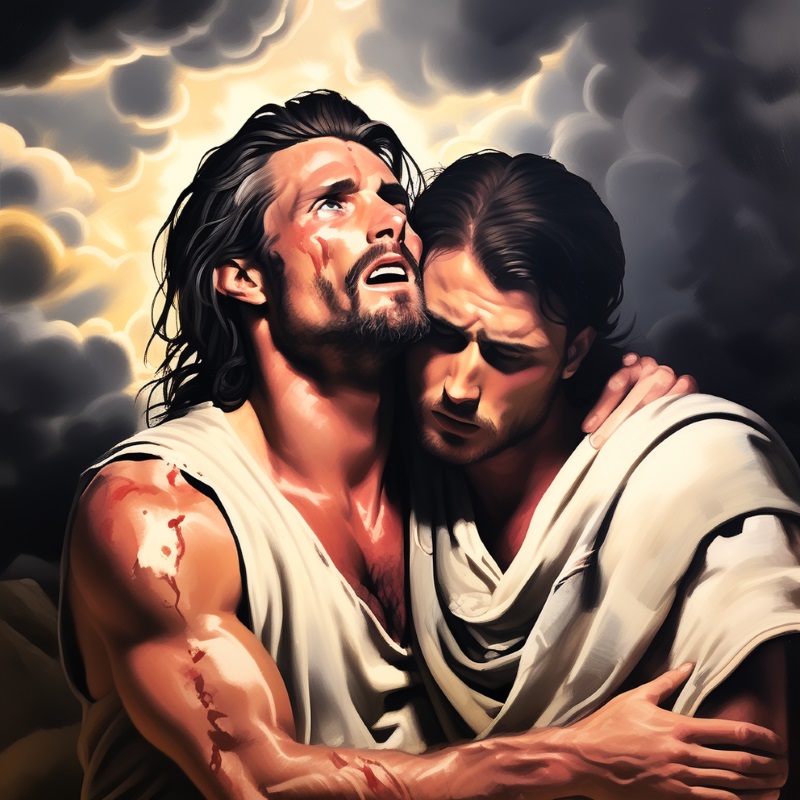

2 Later she gave birth to Cain’s brother Abel. is a speaker, Bible teacher, and co-founder of The Bible Study Club. With the help of the LORD I have brought forth a man, she said. What Is the Meaning and Significance of Cain and Abel Photo Credit: GettyImages NiseriN Clarence L. Further Reading: Keith Vaughan: Retrospective Exhibition, exhibition catalogue, Whitechapel Gallery, London 1962, reproduced, pl VIII Malcolm Yorke, Keith Vaughan: His Life and Work, London 1990 Keith Vaughan, Journals 1939-1977, London 1989 Toby Treves March 2003ĭoes this text contain inaccurate information or language that you feel we should improve or change? We would like to hear from you. Cain and Abel 1 And Adam had relations with his wife Eve, and she conceived and gave birth to Cain. Throughout this period he continued to paint and draw, though wartime restrictions limited his paintings mainly to gouaches on paper. He had joined the army as a conscientious objector in 1940 and served as a non-combatant until March 1946. This picture was painted in 1946 about the time that Vaughan was demobilized. This technique was used by several of Vaughan’s contemporaries, including Graham Sutherland (1903-80) and Henry Moore (1898-1986). The resulting surface is well suited to the theme of physical corruption and decay which permeates the work. He holds the dubious honor of being the first person to die, to die due to a violent act, to die as the result of a crime, and to die childless. He is the second son of Adam and Eve brother of Cain and Seth (Genesis 4:2). The pitting and strange blotches on the figures’s green flesh is achieved by combining watercolour, gouache, pen and ink, and a wax resist. Theres only one person named Abel ( ) in the Bible. In its subject Cain and Abel tends more towards romanticism than pastoralism. This strain of art, which flourished during the war, combined the idyllic pastoralism of Samuel Palmer (1805-1881) with a romantic sense that the natural world threatened mankind. Vaughan’s pictures up to 1946 conform to a type of English painting which has been called Neo-Romanticism. The latent homoeroticism of the picture is consistent with much of Vaughan’s work. In a deliberate compositional conceit, the weapon, and Cain and Abel’s heads are all aligned along the central vertical axis. In contrast, Cain’s tormented face, reminiscent of a tragic mask, stares out of the picture, his eyes unseen and his hair windswept as if caught in a storm. Abel’s head, bearing an almost serene expression, lolls pathetically against Cain’s massive chest. Some interpreters take this to mean that Cain was literally the son of the. In his right hand is the weapon, possibly a bone of some sort, with which he has bludgeoned his brother. In the Hebrew Bible, Cain and Abel (Hebrew:, Qayin, Hevel) are two. Cain is depicted standing in a louring landscape clutching Abel’s limp body. For Vaughan, who had been a conscientious objector during the Second World War (1939-45), it is likely the story had a special poignancy. As the first occurrence of murder in the Bible, the story has had considerable interest for artists over the centuries. Cain was thrown into a rage of jealousy when his brother Abel’s offering was accepted by God instead of his. The painting refers to the biblical story of Cain and Abel as recounted in chapter four of the Book of Genesis.


 0 kommentar(er)
0 kommentar(er)
